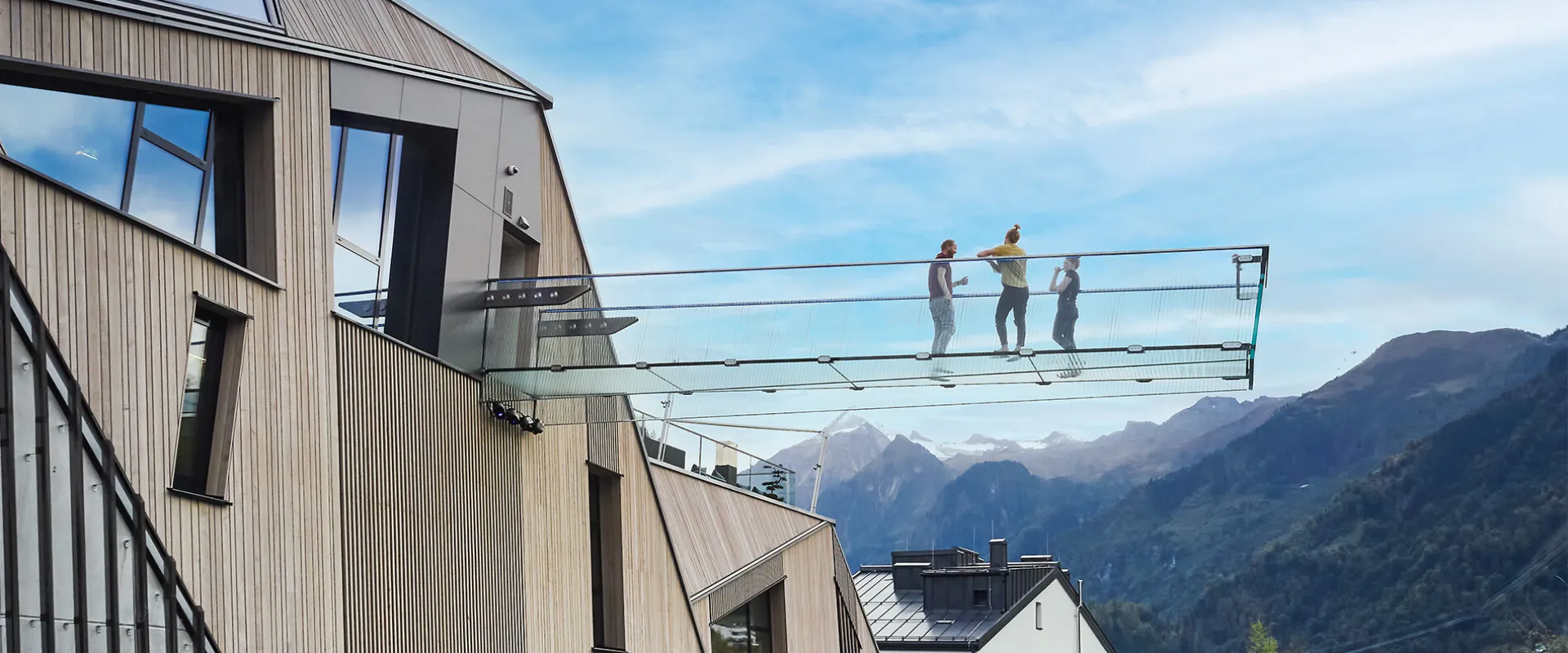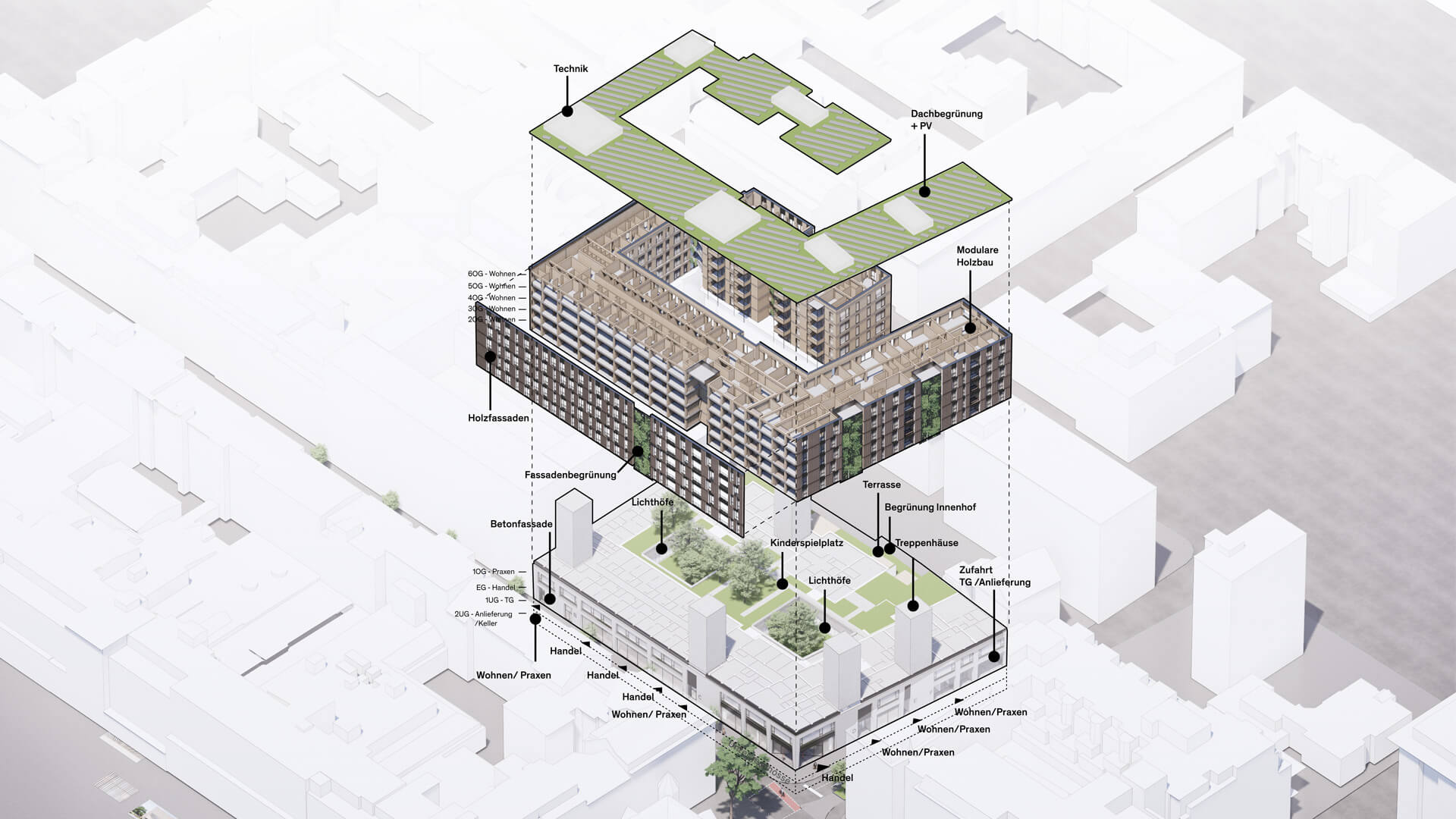
cradle to cradle
condemned houses take notice!
Waste-free production
Cradle to Cradle means
- safe materials
- recyclability
- renewable energy
- responsible water use
- socially equitable planning and action
- clean separability
- accurate documentation
- elimination or minimization of production waste
- constant flow and change of material
The circular economy may well become the guiding principle for the decade ahead…
… thus infusing the concept of sustainability with new life. In the world of construction, C2C (Cradle to Cradle) has arrived. But what does Cradle to Cradle really mean? The notion first emerged in the 1990s, when chemist Michael Braungart and architect William McDonough developed the concept of a strict separation between technical and biological circulation: Instead of generating “waste,” resulting products would either biodegrade to the benefit of the environment, or be reusable ad infinitum in closed technological systems. Cradle to Cradle eliminates artificial toxins from the environment. You can safely compost a pair of C2C jeans made of organic cotton, since they are free of pesticides or bleach. In other words, Cradle to Cradle requires a different approach to production and a truly sustainable way of dealing with our environment and its finite resources.
209 million tons of debris per year
In order to apply the principle of Cradle to Cradle to architecture, one has to start with materials. »Germany alone uses 517 million tons of raw mineral materials each year,« says the VDI Center for Resource Efficiency. That represents about »90 percent of the total domestic extraction.« The percentage of construction steel and cement is also high, and construction and demolition activities generate some 209 million metric tons of debris annually which accounts for more than half of Germany's waste. It should be no surprise that experts have been arguing for years in favor of reusing building materials and conserving the »gray energy« bound up in construction: The slogan »Reduce, Reuse, Recycle« goes back to 2012, with Germany’s pavilion at the Venice Biennale of Architecture. Materials such as recyclable concrete are an important step on the path towards achieving a functioning circular economy; after all, the »concrete content in residential buildings is now at more than 50 percent, and in commercial buildings often as much as 90 percent.«

Statement from our expert Benjamin Blocher
»Material composites are particularly challenging. We must be able to separate out the components as cleanly as possible, in line with the Cradle-to-Cradle principle. In the medium term, of course, this will have an effect on primary construction products. For example, instead of using adhesives to create practically indissoluble compounds that end up as hazardous waste, we use materials that can be cleanly separated and we document them in detail. Every item is tested; everything from materials to construction must be planned holistically. We must select each product carefully and document everything digitally. We architects have always been generalists. Which is why our Lifecycle Analysis is consistent down to the last detail! Yes, that requires more effort at the outset: In order to achieve long, theoretically infinite use, we need an information network. But our experience makes it absolutely clear: In the end, we save money.«
Saving energy
Condemned houses take notice! A radical change is coming: Houses are becoming more flexible. Designed from the outset to be versatile and modular, they can be more easily modified, expanded, extended and converted. This requires a new way of thinking – or a return to tradition. After all, houses used to be repurposed rather than torn down and replaced. Until modern times, that is. The numbers speak volumes: Renovation saves around two thirds of the materials compared to a new house. The EU research project Buildings as Material Banks shows where we could be headed: A BIM-compatible database of buildings and their products is being created using a materials passports (MP) – that is, a kind of ID for new constructions and reconstructions. Buildings slated for demolition are being transformed into valuable storehouses of material. Initial estimates show that this increases their value by about ten percent over a 20-year use. In economic terms, billions are at stake. In its study »Universal circular economy policy goals«, the Ellen MacArthur Foundation estimates that application of this approach in the fields of construction, agriculture and transportation will save the EU 1.8 trillion euros by 2030.
The first Cradle to Cradle buildings
So what does this mean in concrete terms for Cradle-to-Cradle buildings? The first examples are out there already, in Essen (administration buildings for the RAG Foundation and the RAG company in Zollverein); in Hamburg (the Moringa-Haus in Hamburg Harbor) and in the Swiss town of Dübendorf, where the Materials Testing Institute’s NEST program (Next Evolution in Sustainable Building Technologies) has created an experimental house on whose building core and three platforms different modules are installed temporarily. The house is constantly in flux and thus demonstrates the possibility of a new category – somewhere between the laying of the foundation stone, the completion of construction and ultimately the building’s demolition – characterized by constant material flow and change. The new motto for architecture, urban planning and society will be »Use, don’t use up.«

Cradle to Cradle and sustainability
Ultimately, when everything is reversible, modular and temporary, the concept of a house takes on a whole new aspect. Greater investment in furnishings is just as conceivable as is a natural transformation of facades and purposes. The products used to accomplish this do not necessarily have to be certified by the San Francisco-based Cradle to Cradle Products Innovation Institute, but they will have to measure up to similar standards: safe materials, renewable energy, responsible water use and social justice. Sustainable building and Cradle to Cradle are two sides of the same coin: They increase the emphasis on materials and so-called inventory, even as materials become much more versatile – all for the good of the planet, and for us, its inhabitants.